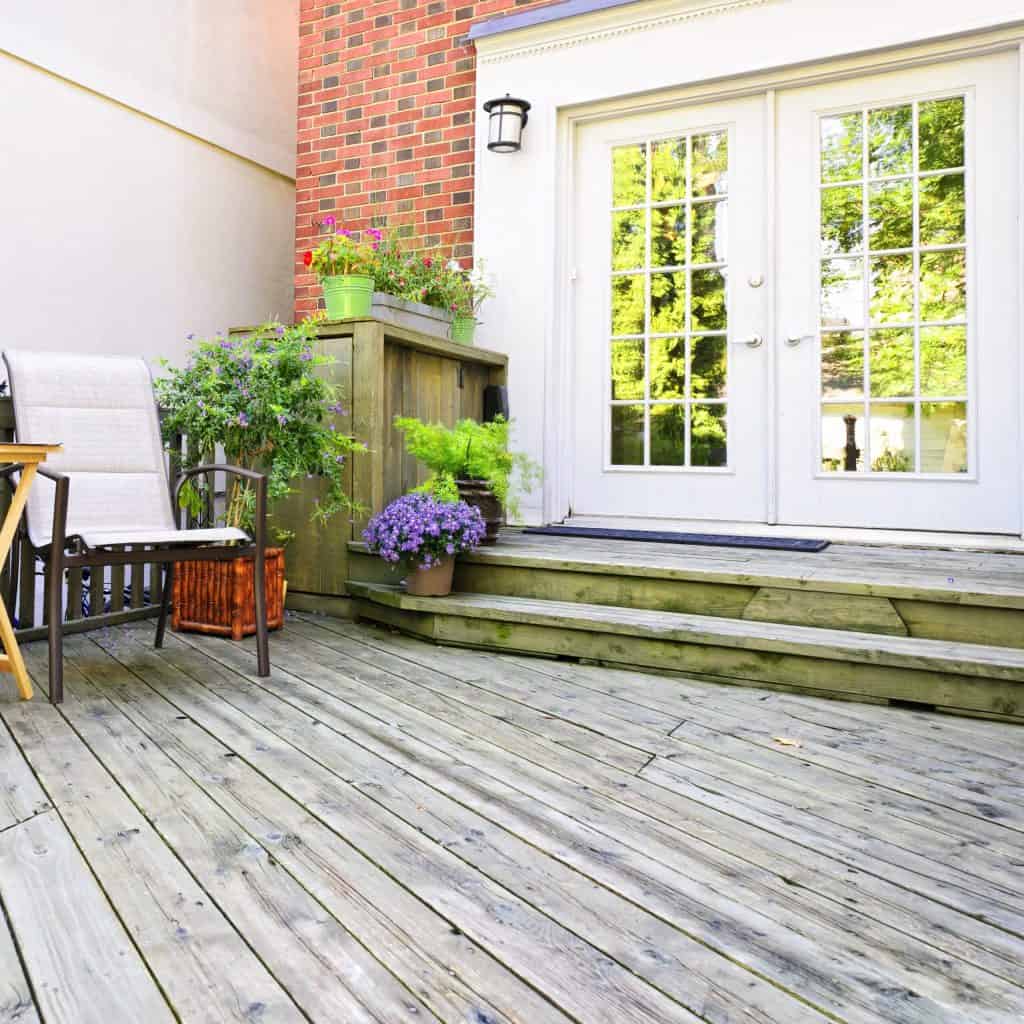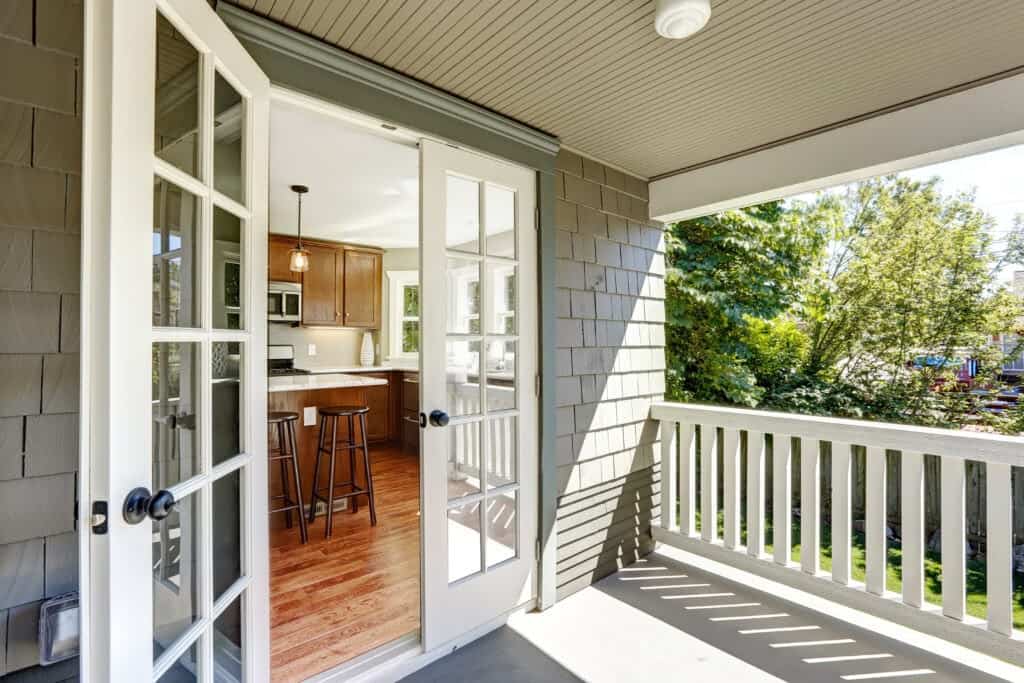French doors are a very popular choice for exterior doors on houses or apartments. If you are thinking about installing French doors in your home, you might have a lot of questions about them. One of the biggest questions about the function of French doors is if they open 180 degrees or just the normal 90 degrees?
French doors can open outwards up to 180 degrees and many designs do. While not all French doors are equipped with this feature, if they have a parliament hinge or any other kind of 180-degree hinge then they will be able to open much farther than a standard door can.
Now that you know that French doors can open outwards and they have the capability of opening very wide, we should talk about the benefits of this feature and the different options French doors have when it comes to the space they need to open to. Keep reading to learn more about how to get your French doors to open the way you want them to!
French Doors: The Basics
French doors are one of the most popular additions to any house or apartment as of recently. Because of how trendy they have become, people want to know about their potential functions and why they are so popular. Before we talk about how they function, it is important to know what they look like and where they are usually installed.
Appearance
The very first thing to know about French doors is what they look like. French doors are always a set of two doors that close into each other. There can be multiple sets of French doors next to each other along the wall, and this is an increasingly popular design. French doors are a lot like French windows. They typically have a large frame, with smaller panels inside of it for sheets of glass. This is the most common and well-known way that French doors are made.
Some more modern versions of French doors have a large frame, but instead of separate, smaller panes of glass, they just have one large pane of glass within the frame. This is a much more modern look compared to traditional French doors, but it can look just as nice. Another style does not have any panes of glass and is just wood. This style is used for indoor areas instead of exterior doors.
Where to Install
French doors are so versatile and can be installed anywhere in the home. This means that this style of door can be used for both exterior and interior doors and will look beautiful in both situations. When used as exterior doors, French doors are typically set with glass so they can let a lot of natural light in and provide the room with a great, outdoor view. When installed indoors, glass French doors can help a room feel bigger. In addition, wooden French doors can help make a room feel more luxurious. No matter where you want to put them, French doors can be a great benefit to any house.

The Function of French Doors
While knowing the appearance of French doors is important, it is more crucial to understand how they are different from regular doors. French doors, as explained before, are made up of a set of doors that work together to close a larger opening. One of the doors will stay stationary while the other one can open and close freely. To open the space up even more, the stationary door can be unlocked and opened so that the entire door frame is much larger.
French doors really open up a space by giving the user a bigger door frame to walk through. Their function is different from other doors and they can elevate the quality of a home by quite a bit!
Why Do You Need 180 Degrees?
As we have covered, French doors can open 180 degrees if they have the correct hinges on them. This is a highly important and requested feature for these types of doors. Opening 180 degrees allows the doors to lay flat against the wall when fully opened. This helps keep them out of the way and helps open up the space even more.
Having doors that open 180 degrees not only opens up the space, but it also really helps with the functionality of the room. When doors are open, they often take up some of the interior space and are in the way. When doors open 180 degrees, they are out of the way and the rest of the room can function as normal because there is no door to watch out for! If your doors open outside, they will leave plenty of room on your patio or balcony when they are fully open.

How to get French Doors that Open 180 Degrees
The best way to get French doors that open the full 180 degrees is to purchase them knowing that they have this feature, or you can install them with 180-degree hinges. Both options work great, and you won’t regret having this feature installed.
Buying
Buying French doors with this feature already built-in is the easiest way to make sure that they will open 180 degrees. The advertisement or features list for the French doors you select will tell you about this feature if they already have it. This is the easiest option because you do not have to make any special modifications to the doors.
Installing
The other option to get your doors to open 180 degrees is to install special hinges on them apart from their original hinges. These special hinges can be found in nearly every hardware store and online in so many places. All you have to look up is “180-degree door hinges” and you should be able to find several products that will work for you. A popular style of 180-degree hinges is called “parliament” hinges. These have a full range of motion and give the door and door frame a little extra room to breathe.
To install these hinges, just unscrew the old, regular hinges and screw in the new hinges in the proper direction that you want them to go in. It’s as simple as that!

